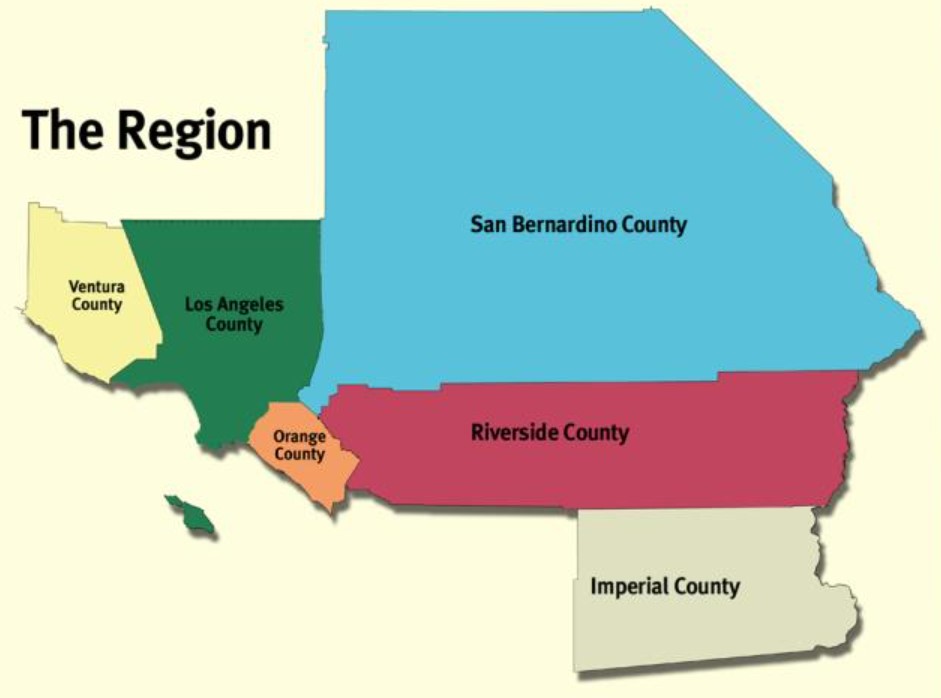As the Senate debates the terms of new COVID stimulus bill, some Southern California counties are debating how to carve up federal transit stimulus monies approved last December. The Coronavirus Response and Relief Supplemental Appropriations Act of 2021 (CRRSAA) included $13.3 billion for transit agencies nationwide, with almost $955 million for Southern California. In January, Metro Senior Director for Federal Affairs Raffi Hamparian announced that Metro anticipated receiving $750-850 million from CRRSAA. This is in addition to $846 million that Metro received from the earlier CARES Act stimulus.
The federal stimulus monies are administered by the Southern California Association of Governments (SCAG) which is the Metropolitan Planning Organization for six Southern California counties. This week, SCAG Executive Administration Committee had approving allocations for that $955 million on its agenda. The funding would have broken down similar to the formula used for the earlier CARES Act transit monies. Under the SCAG staff recommendation, L.A. County would receive $911 million out of $955 million; the lion's share would go to Metro, though allocations also go to L.A. County municipal bus agencies.
"Not so fast!" cried the directors of three SCAG counties' transportation agencies: the Riverside County Transportation Commission (RCTC), the Orange County Transportation Authority (OCTA), and the San Bernardino County Transportation Authority (SBCTA). In a letter (page 15) those agencies claimed that SCAG "misinterprets the CRRSAA statutory language."
CRRSAA has a new distribution formula rule that limits total CARES+CRRSAA funding to 75 percent of an urbanized area’s 2018 operating costs. This rule tries not to give a windfall to agencies that don’t spend very much on transit.
The RCTC/OCTA/SBCTA letter makes the distinction that CRRSAA limits funding to an area (in this case the Los Angeles-Long Beach-Anaheim urbanized area), but does not cap funding for a specific transit agency. They say that the CRSSA 75 percent limit (used by SCAG to divide the money) does not apply to them.
Metro CEO Phil Washington responded with his own letter, which states:
Collectively, Metro and other transit operators in Los Angeles County have spent and received reimbursement from the Federal Transit Administration (FTA) for over 98% of our region’s share of the original Coronavirus Aid, Relief, and Economic Security (CARES) Act intercounty funding allocations from SCAG. Consistent with the federal process for apportioning CRRSAA funds to each Urbanized Area (UZA), the SCAG staff recommendation reflects the operating expenses in each county and the total resources apportioned to each county as a result of both federal transit stimulus relief acts. This methodology appropriately directs CRRSAA funding to the demonstrated need for transit operating assistance in Los Angeles County compared to other counties in the SCAG region. The alternative proportionate allocation would result in a loss of $127 million to Los Angeles County transit operators that generated the CRRSAA funds for the UZA and desperately need these additional funds to maintain critical transit services to Los Angeles County’s 10 million residents.
As Washington notes, at stake is $127 million from CRRSSA - as well as setting a precedent that could apply to the next stimulus.
The allocation recommended by SCAG staff had funded L.A. County at 74.7 percent, Orange at 74.9 percent and Riverside at 74.7 percent of 2018 operating expenses.
The other counties are asking to fund L.A. at 69.8 percent, Orange at 108 percent and San Bernardino at 170.6 percent. As the SCAG agenda packet states, "proportionate allocation would result in distributions that exceed operating expenses in several counties while falling below the 75 percent equivalent in others."
These differences are an artifact of Orange and San Bernardino Counties running relatively little transit compared to their population and compared to the overall levels of transit in their region. If Orange County were considered their own urban area, CRRSAA would only allow them to get 75 percent of their 2018 operating expenses, not the 108 percent that they are now pushing for from SCAG.
CRRSAA's 75 percent limit is impacting other places. Some areas that did well in the initial CARES Act stimulus saw diminished returns under CRRSAA. San Diego transit is receiving no money under CRRSAA because it already passed the 75 percent cap. Chicago saw its allocation shrink.
Yesterday, SCAG ended up postponing the decision. SCAG approved allocating the $828 million that is not disputed, and postponed allocating the remaining $127 million, pending working with the agencies disputing the proposed allocation.
The need is clearly great in more highly-urbanized more transit-rich areas. L.A. County needs get somewhat short shrift in a six-county SCAG region that ends up skewing more suburban. Unfortunately Metro hasn't helped its case; the agency has neglected some of its transit operation responsibilities during the pandemic. Metro's justification that funds are needed "to maintain critical transit services" ring a bit hollow in light of how the agency has cut service and delayed restoring service back to pre-pandemic levels, despite close to $2 billion in stimulus funding designed to bolster transit operations (and more very likely on the way).
Hat tip to Twitter's Metro town crier @numble who first posted the documents that led to this story.







